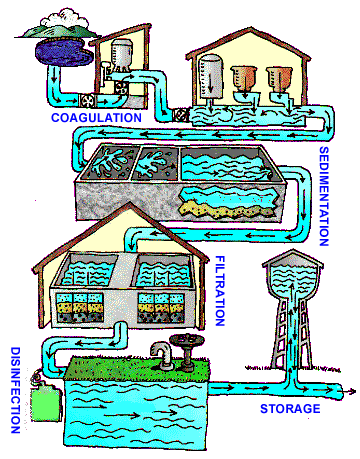Water Softener Filtration System Things To Know Before You Buy
Table of ContentsFacts About Water Softener Filtration System UncoveredLittle Known Facts About Water Softener Filtration System.9 Easy Facts About Water Softener Filtration System ShownA Biased View of Water Softener Filtration SystemThe 10-Second Trick For Water Softener Filtration SystemAn Unbiased View of Water Softener Filtration System
While you can acquire prefiltered water or make use of a store-bought purification system to enhance water high quality, you can also attempt numerous do it yourself techniques of filtering system water. To discover the very best approach, consider your objectives. Particular techniques function best for removing physical debris as well as particles, whereas others are better for getting rid of hefty metals and also germs or improving smell and also taste.
You can use DIY water filtering in your home, for traveling, or in nature. While it can take a little creative thinking and initiative, you can improve the top quality and also aesthetic of your water even if you do not have a traditional filtering option available.
Intro, In previous research study sessions you have found out about resources of water, how they can come to be infected and about ways of protecting them. Despite source protection it is usually essential to deal with water to ensure it is risk-free. This holds true at household degree, which is discussed in Research study Session 10, and when supplying water for communities as well as cities.
The smart Trick of Water Softener Filtration System That Nobody is Discussing
You will also find out about the management of wastes generated in the process of water treatment, as well as take into consideration the problems of sustainability as well as durability in relationship to massive water therapy. Knowing Outcomes for Research Study Session 5When you have actually examined this session, you must be able to:5. 1 Specify and use properly every one of the keywords published in vibrant.
2 Explain the different stages in the water treatment process. 3 Describe exactly how the wastes from water therapy plants are disposed of. 4 Suggest exactly how water treatment technologies can be made lasting and also resilient.
1 The requirement for massive water therapy, Water treatment is the process of eliminating all those materials, whether biological, chemical or physical, that are possibly hazardous in water supply for human and also residential usage. Water also needs to be non-corrosive, indicating it will not trigger damage to pipework. water softener filtration system.
6 Easy Facts About Water Softener Filtration System Explained
This creates a demand for big quantities of secure water to be provided dependably and continually, and this need is expanding. As urban populaces raise, there is a requirement to discover new sources to meet the growing need. If groundwater is available this can often be used with minimal treatment but any kind of surface area water source will certainly need to be treated to make it secure.
6 explains how this estimation is made however first you will look at the main phases in the water therapy procedure. 2) in large-scale water therapy for urban municipal water supply (Abayneh, 2004).
(There is a chlorination action at the end of the therapy procedure, which is regular in a lot of water treatment plants). 3 Coagulation and flocculation, After oygenation, coagulation takes location, to remove the great particles (less than 1 m in size) that are put on hold in the water.
The Water Softener Filtration System Diaries
Here the water is delicately stirred by paddles in a flocculation basin (Figure 5. 5) and also the flocs enter contact with each various other to develop bigger flocs. The flocculation basin typically has a variety of areas with decreasing mixing rates as the water breakthroughs through the basin (Number 5.
7), with a circulation rate of 48 cubic metres per square metre of filter surface per hour (this is composed as 48 m3 m2 h1) are commonly utilized. When the filters are complete of entraped solids, they are backwashed. In this procedure, tidy water as well as air are pumped in reverse up the filter to remove the entraped contaminations, as well as the water carrying the dirt (described as backwash) is pumped right into the sewerage system, if there is one.
5.2. 6 Chlorination, After sedimentation, the water is disinfected useful site to get rid of any continuing to be pathogenic micro-organisms. The most typically made use of anti-bacterial (the chemical used for sanitation) is chlorine, in the form of a liquid (such as sodium hypochlorite, Na, OCl) or a gas. It is reasonably inexpensive, and also basic to make use of.
The smart Trick of Water Softener Filtration System That Nobody is Discussing
The quantity of chlorine left hereafter is called residual chlorine. This remains in the water right via the circulation system, shielding it from any micro-organisms that might enter it, till the water reaches the consumers. World Health Organization Guidelines (THAT, 2003) visit the website recommend a maximum residual chlorine of 5 mg l1 of water.
5 mg l1 of water after thirty minutes' contact time (WHO, n. d.). There are other ways of disinfecting water (e. g. by using the gas ozone, or ultraviolet radiation) however these do not protect it from microbial contamination after it has left the water therapy plant. Complying with sanitation the treated water is pumped right into the circulation system.
7 Supplemental treatment, Additional therapy may occasionally be needed for the advantage of the population. One such instance is the fluoridation of water, where fluoride is contributed to water. It has been stated by the Globe Health And Wellness Organization that 'fluoridation of water materials, where possible, is one of the most reliable public health and wellness action for the avoidance of oral decay' (WHO, 2001).
More About Water Softener Filtration System
